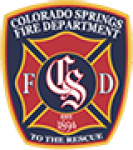When residents call 911, they shouldn’t always expect a fire truck and ambulance to show up with sirens blaring – and that’s a good thing according to the Colorado Springs Fire Department’s Deputy Chief Jayme McConnellogue.
Jen Schreuder, host of Behind The Springs podcast, sat down with McConnellogue to learn more about the fire department’s goals and how they’re working to provide more specialized care to residents calling for emergency services.
The main program, Community Medical Response Units or CMED, provides help to those who need assistance, but do not require fire response. In previous emergency response models, as soon as a call was determined to be medical in nature, it was lights and sirens for both fire and ambulance responders.
Medical determinants refer to a system that helps classify the severity of a certain call when it is made. Determinants can range anywhere from a slight cough to a cardiac arrest, says McConnellogue.
She goes on to explain that if a call is not of high severity, back pain for example, then it does not warrant a full response and may not require a trip to the emergency room. If a fire truck and ambulance respond to these low acuity calls, it leaves those resources out of service for calls that are more urgent, like someone having a heart attack.
The program has gone through two, 6-month trial periods that have been very successful. CMED teams are led by civilian trained EMT responders, that attend to roughly 6-8 calls per day on their 10-hour shifts.
“Call volume is only going up and up as our city continues to grow, so we are hopeful that we can expand this program even further,” says McConnellogue.
This type of system benefits the entire community, which is why the full conversation is worth a listen.

